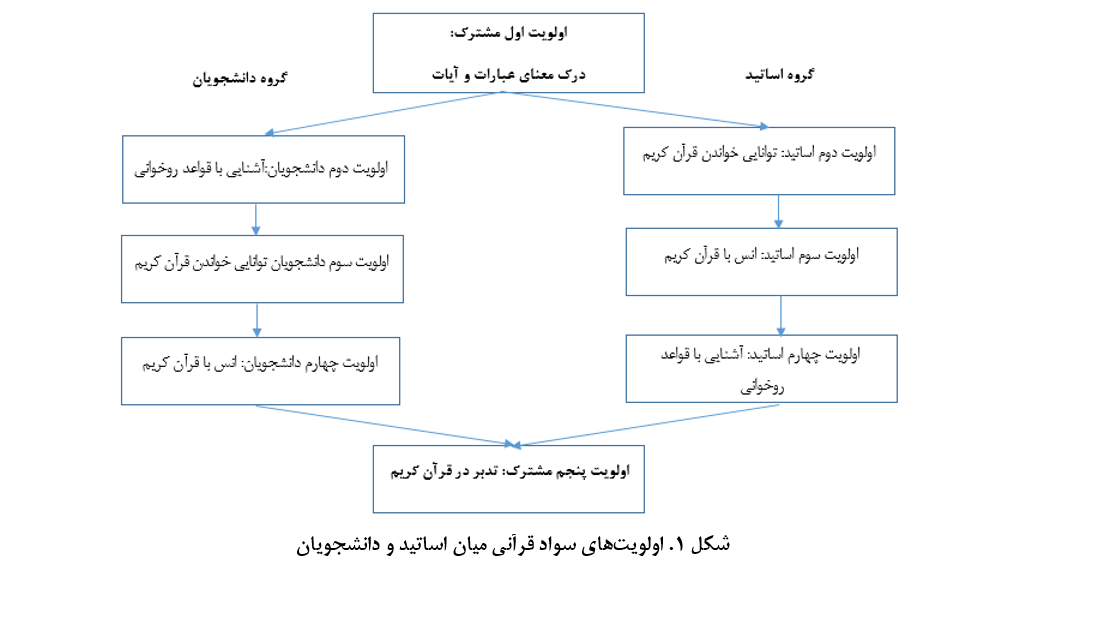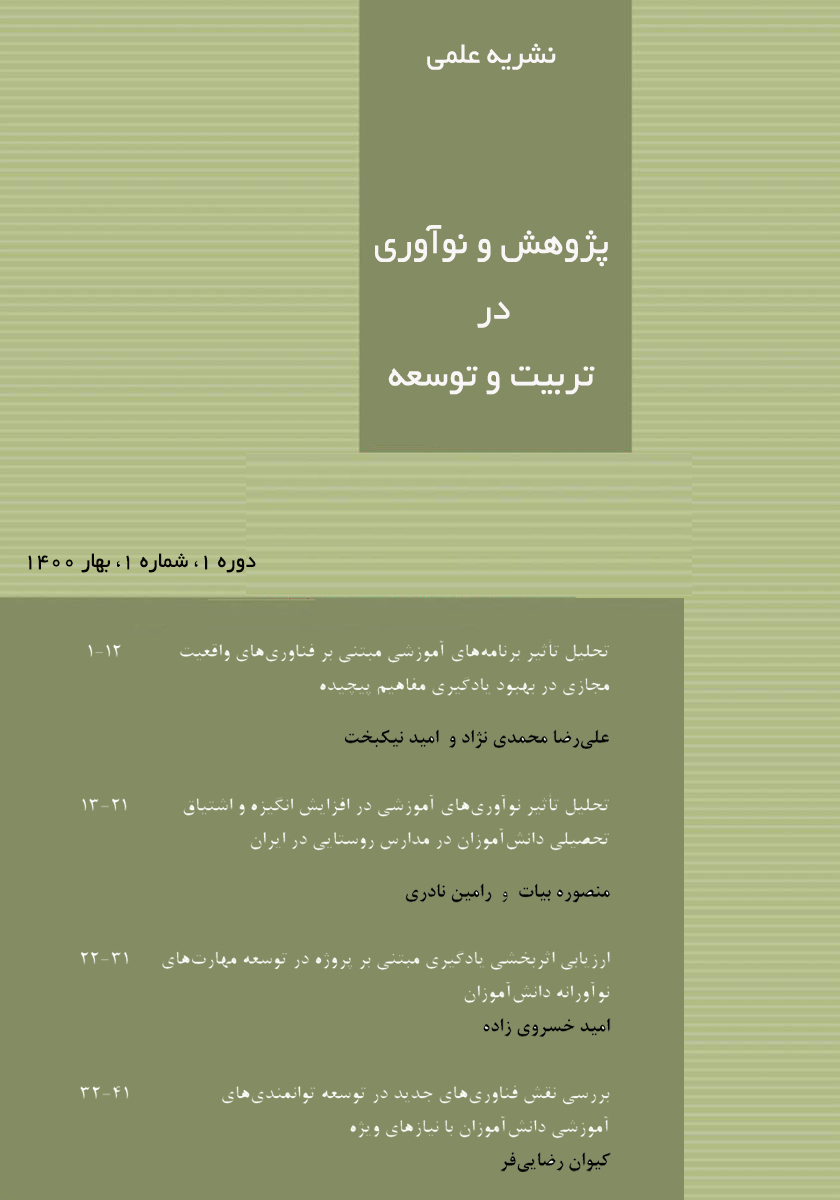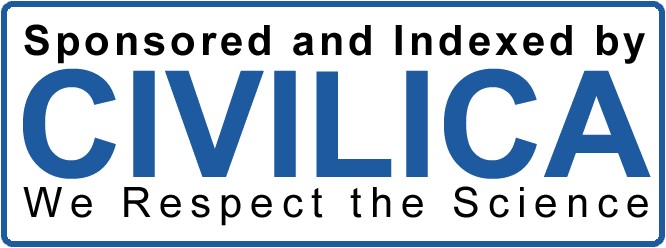نگاهی دوباره به مولفههای سواد قرآنی و اولویتبندی آنها برای تقویت آموزش قرآن کریم در فضای دانشگاهی مبتنی بر یادگیری الکترونیکی
کلمات کلیدی:
آشنایی با قواعد روخوانی, توانایی خواندن قرآن کریم, درک معنای عبارات و آیات, انس با قرآن کریم و تدبر در قرآن کریم, دانشجویان, اساتیدچکیده
هدف از پژوهش حاضر، مطالعه مولفههای سواد قرآنی (آشنایی با قواعد روخوانی، توانایی خواندن قرآن کریم، درک معنای عبارات و آیات، انس با قرآن کریم و تدبر در قرآن کریم) و اولویت آنها جهت برنامه ریزی آموزش مادام العمر دانشجویان و اساتید دانشگاه پیام نور است. این پژوهش از حیث هدف کاربردی، از حیث ماهیت علی- مقایسهای است و از نظر اجرا به صورت پیمایشی انجام شد. جامعه آماری پژوهش شامل کلیه اساتید گروه علوم تربیتی دانشگاه پیام نور و دانشجویان یادگیری الکترونیکی این دانشگاه در سال تحصیلی 1403- 1402 است که تعداد 358 دانشجو و 84 عضو هیات علمی به روش نمونه گیری تصادفی طبقهای انتخاب شدند. پس از مطالعه ادبیات و پیشینه، پرسشنامه محقق ساخته سنجش سواد قرآنی که روایی و پایایی آن مورد تائید قرار گرفت، میان نمونه آماری توزیع شد. نتایج آزمون تی مستقل نشان داد درخصوص مولفههای درک معنای عبارات و آیات، انس با قرآن کریم و تدبر در قرآن کریم در میان دانشجویان و اساتید تفاوت معناداری وجود دارد در حالی که درخصوص مولفه آشنایی با قواعد روخوانی، توانایی خواندن قرآن کریم تفاوتی میان دانشجویان و اساتید یافت نشد. همچنین نتایج آزمون فریدمن درخصوص رتبه بندی مولفههای سواد قرآنی نیز نشان داد که هر دو گروه اساتید ودانشجویان، درک معنای عبارات و آیات را به طور مشترک به عنوان اولین اولویت خود انتخاب نمودند، سپس اساتید به ترتیب توانایی خواندن قرآن کریم، انس با قرآن کریم، آشنایی با قواعد روخوانی را به عنوان اولویتهای بعدی خود انتخاب نمودنددر حالی که دانشجویان به ترتیب توانایی خواندن قرآن کریم، انس با قرآن کریم، آشنایی با قواعد روخوانی را انتخاب نموده اند و هر دو گروه مشترکاً تدبر در قرآن کریم را به عنوان اولویت آخر انتخاب نموده اند. به دلیل اهمیتی که آموزش، در ایجاد سواد قرآنی دارد، دورههای تخصصی آموزش قرآن کریم در قالب یک برنامه درسی جامع و با تمرکز بر روی مولفههای سواد قرآنی برای دانشجویان و اساتید دانشگاه طراحی گردد.
دانلودها
مراجع
Rigi H, editor The necessity of teaching the Holy Quran in elementary schools of the Islamic Republic2023; Bandar
Abbas.
Nurhalizah S, Siahaan A, Daulai AF. Implementation of the Al-Qur'an Literacy Program to Improve the Ability to
Read the Al-Qur'an at the Al-Abid Islamic Elementary School in Medan. International Journal Of Humanities Education And
Social Sciences (IJHESS). 2023;3(2):975-88. doi: 10.55227/ijhess.v3i2.612.
Maisarah M, Wijaya C, Daulai AF. The Influence of Internalizing Islamic Values and Quranic Literacy on Preventing
Bullying Behavior. EDUTEC : Journal of Education And Technology. 2023;7(2):472-81. doi: 10.29062/edu.v7i2.669.
Ghorbanian M. Examination and explanation of the methods of the Holy Quran in transforming human culture and
beliefs. Quran, Culture, and Civilization. 2022;3(1):28-47.
Nazari M, Ghabari Bonab B, Bahrinan SA, Haji Alizadeh K. Designing and examining the psychometric properties
of the Spiritual Maladaptive Schemas Questionnaire. Disability Studies. 2022;12(147):2-8.
Norouzi F, Payan K, editors. How could I improve Quran reading and fluency skills in students by using various
teaching methods?2023; Mazandaran, Mahmoudabad.
Ajam AA, Mobasheri Z. The effectiveness of "Quranic Stories" on the "philosophical mindset" and "tendency toward
critical thinking" of sixth-grade female students. Biannual Scientific-Research Journal of Psychology. 2019;13(25):51-68.
Jalali SM. Structural pathology of modern science with an approach to religious science. Shiite Comparative Theology
Research Journal. 2024;5(8):133-72.
Saif Aziz M, Arsyad J. The Effectiveness of The al-Qur'an Literacy Program In Improving Academic Achievement.
Jurnal At-Tarbiyat :Jurnal Pendidikan Islam. 2024;7(3). doi: 10.37758/jat.v7i3.445.
Aziz H, Hikmawati M, editors. Al-QUR'AN LITERACY: CONCEPTIONS OF METAPHORICAL THINKING IN
THE HOLY QURAN2024.
Bukhari Muslim A, Harisca R, Basyori A, editors. The Impact of Arabic Literacy on Understanding Quranic
Verses2024.
Supriadi U, Supriyadi T, Abdussalam A. Al-Qur'an Literacy: A Strategy and Learning Steps in Improving Al-Qur'an
Reading Skills through Action Research. International Journal of Learning, Teaching and Educational Research.
;21(1):323-39. doi: 10.26803/ijlter.21.1.18.
Hatika H, Abu Nawas MZ, Takwim M, Riawarda A. Implementation of Al-Qur'an Literacy for High School Students.
Journal of Indonesian Islamic Studies. 2021;1(1):1-8. doi: 10.24256/jiis.v1i1.2267.
Rafiei M, Sharifi M. The status of Quranic literacy among students (Case Study: Student-teachers at Farhangian
University). Biannual Journal of Quran Recitation Studies. 2023;11(21).
Allah Karami A, Amiri A, Tufani Nejad E. Interactive multimedia, Quranic literacy, and academic motivation.
Educational Technology and Learning. 2017;3(12):27-46.
Hosein Bar Modarres MA, Sepahian A, editors. The place of Quranic literacy of students in the Fundamental
Transformation Document and the National Curriculum2013.
Sohrabi H, Mohammadrezaei A, Emadi M. The effectiveness of the national Quran memorization plan in enhancing
Quranic literacy among NAJA employees. Insight and Islamic Education. 2016;13(39):133-56.

دانلود
چاپ شده
ارسال
بازنگری
پذیرش
شماره
نوع مقاله
مجوز
حق نشر 2024 نشریه پژوهش و نوآوری در تربیت و توسعه

این پروژه تحت مجوز بین المللی Creative Commons Attribution-NonCommercial 4.0 می باشد.










